
Amenhotep III, also known as Amenhotep the Magnificent or Amenhotep the Great, was the ninth pharaoh of the Eighteenth Dynasty. According to different authors, he ruled Egypt from June 1386 to 1349 BC, or from June 1388 BC to December 1351 BC/1350 BC, after his father Thutmose IV died. Amenhotep was Thutmose's son by a minor wife, Mutemwiya.

The necropolis of Sheikh Abd el-Qurna is located on the West Bank at Thebes in Upper Egypt. It is part of the archaeological area of Deir el-Bahari, and named after the domed tomb of the local saint. This is the most frequently visited cemetery on the Theban west bank, with the largest concentration of private tombs.
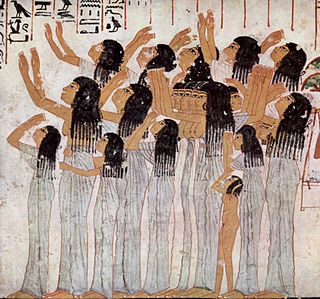
Ramose was an ancient Egyptian name, meaning "Ra is born". Variants of the name include Ramesses (Ramessu) and Paramessu; these various spellings could be used to refer to the same person.
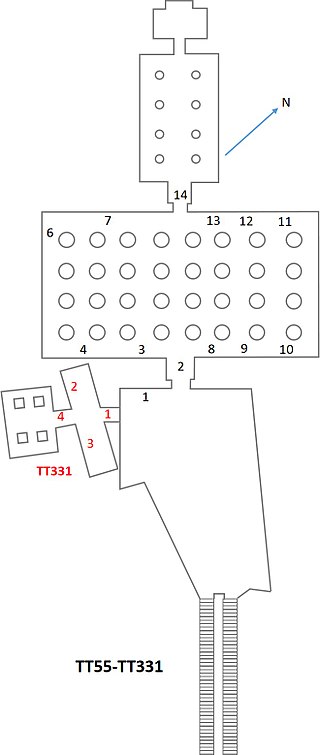
Tomb TT55 is located in Sheikh Abd el-Qurna, part of the Theban Necropolis, on the west bank of the Nile, opposite to Luxor. It is the burial place of the ancient Egyptian Vizier Ramose. It has a main room originally containing thirty-two columns and a corridor with eight columns. This tomb is notable for the high quality decorations in both the traditional and Amarna styles.

Southern Tomb 11 is an ancient sepulchre located at Amarna, Egypt. It was used for the burial of Ramose (General), whose titles included, "Royal scribe, Commander of troops of the Lord of the Two Lands, Steward of Nebmaatra ".
The ancient Egyptian official named Menna carried a number of titles associated with the agricultural estates of the temple of Karnak and the king. Information about Menna comes primarily from his richly decorated tomb in the necropolis of Sheikh Abd al-Qurna at Thebes. Though his tomb has traditionally been dated to the reign of Thutmose IV, stylistic analysis of the decoration places the majority of construction and decoration of the tomb to the reign of Amenhotep III.
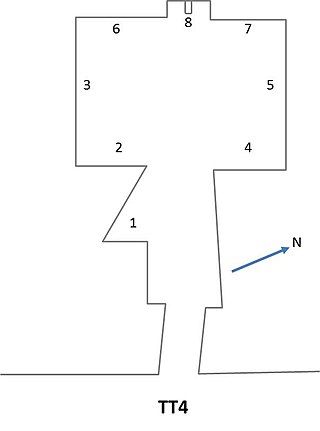
The Theban Tomb TT4 is located in Deir el-Medina, part of the Theban Necropolis, on the west bank of the Nile, opposite to Luxor. It is the burial place of the ancient Egyptian artisan named Qen.
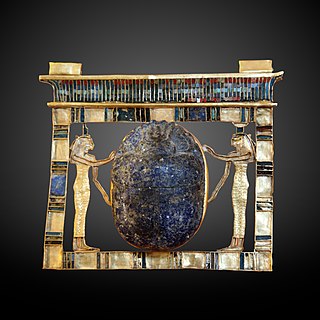
Paser was an ancient Egyptian noble who served as vizier during the reigns of Seti I and Ramesses II in the 19th Dynasty. He would later also become High Priest of Amun.

The Theban Tomb TT31 is located in Sheikh Abd el-Qurna, part of the Theban Necropolis, on the west bank of the Nile, opposite to Luxor. It is the burial place of the ancient Egyptian official, Khonsu, who was First Prophet of Menkheperre, during the 19th Dynasty or 20th Dynasty.

Amenhotep (Huy) was the high steward of Memphis under Amenhotep III in the Egyptian 18th Dynasty. With this title he was one of the highest officials at the royal court.
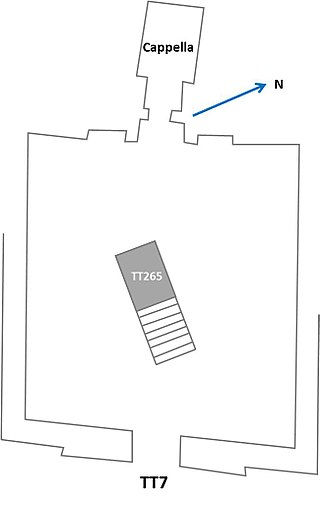
The Theban Tomb TT7 is located in Deir el-Medina, part of the Theban Necropolis, on the west bank of the Nile, opposite to Luxor. It is the burial place of the ancient Egyptian artisan named Ramose, who lived during the 19th Dynasty, during the reign of Ramesses II.

Ramose was an ancient Egyptian scribe and artisan who lived in Deir el-Medina on the west bank of the Nile, opposite Thebes, during the reigns of Ramesses II. He held the position of Scribe of the Tomb, the highest administrative position for a scribe in Deir el-Medina, from around years 5 to 38 of Ramesses II's reign. He was buried in a tomb in the village necropolis.
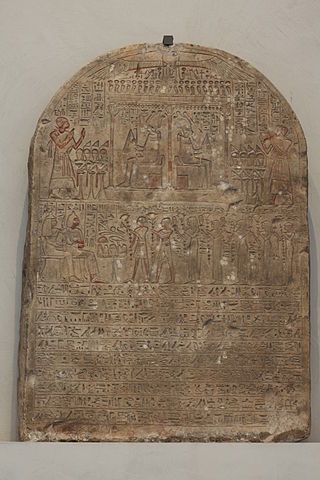
Ptahmose was a High Priest of Amun and Vizier of southern Egypt-(Upper Egypt), under Amenhotep III. Certain historians place him at the end of the reign in 1378 BC. Others place him in the first part of the reign.

Merymose, also Mermose or Merimes, was a Viceroy of Kush under Amenhotep III. He served for almost the entire four decades of that reign.

The High Priest of Ptah was sometimes referred to as "the Greatest of the Directors of Craftsmanship". This title refers to Ptah as the patron god of the craftsmen.
Amenhotep-Huy was a Vizier of Ancient Egypt during the reign of Amenhotep III. Besides being Amenhotep III's Vizier, Amenhotep-Huy was also director of Upper and Lower Egypt and overseer of all the works of the King in Upper and Lower Egypt.
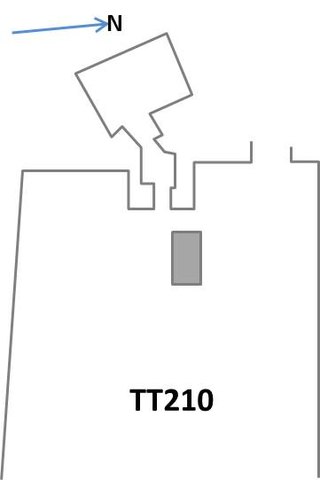
The Theban Tomb TT210, part of the Theban Necropolis, is located in Deir el-Medina, on the west bank of the Nile, opposite to Luxor. TT210 is the burial place of the ancient Egyptian artisan named Raweben, who lived during the 19th Dynasty. Raweben would have lived in Deir el-Medina during the reign of Ramesses II.

The Eighteenth Dynasty of Egypt is classified as the first dynasty of the New Kingdom of Egypt, the era in which ancient Egypt achieved the peak of its power. The Eighteenth Dynasty spanned the period from 1550/1549 to 1292 BC. This dynasty is also known as the Thutmosid Dynasty for the four pharaohs named Thutmose.
This page list topics related to ancient Egypt.

Ipy, also transliterated as Apy, was a court official from the time of Amenhotep III and Akhenaten during the Egyptian 18th Dynasty. Ipy was High Steward of Memphis, and a royal scribe.

















